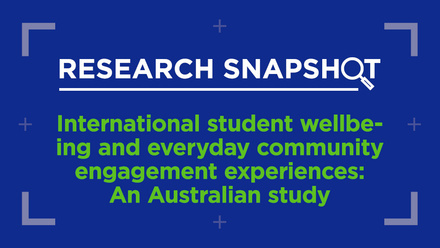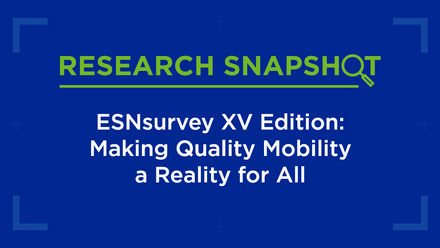Supporting students affected by coronavirus

In recent months, the emergence of the Coronavirus (also known as COVID-19) has sent ripples across the world of higher education. This outbreak has not only highlighted the vulnerability of international students to such risks, but also the threat to international mobility posed by a virus which knows no borders.
As higher education institutions plan their responses, how do we support students who are affected – particularly Chinese students and those from other affected regions? With no signs that the virus will disappear any time soon, higher education institutions need to take a multi-pronged approach to the situation, with measures to mitigate both the health and academic impacts on students and the wider higher education community.
Tackling social exclusion and discrimination against students
Due to the origin of the virus in a specific region of China, recent media reports from a range of countries have indicated that Chinese nationals or others of Asian descent are reporting being stigmatised, excluded or indeed discriminated against. Chinese businesses in the West have been reporting slowing business and lower levels of foot traffic in the weeks since the outbreak, particularly over the typically busy Lunar New Year period. Anecdotal information from Chinese students, as well as cases documented in the media, suggests that students are experiencing exclusion or isolation.
Being socially excluded and discriminated against is a painful and, evolutionarily speaking, life-threatening human experience. Because being an accepted member of a tribal community has always been vital to our survival, human brains have become extremely sensitive to exclusion threats. Neuroimaging studies using fMRI technology show how experiencing and observing others experiencing social pain activates brain circuits that overlap with those for processing ‘real’ physical pain.
Our increasingly internationalised higher education institutions are built on the principles of diversity, equality and inclusion, and therefore institutions need to address clearly how they will counteract discrimination in any form
In order to adequately address the concerns of Chinese students who feel stigmatised and ostracised as potential carriers of the COVID-19 virus, we need to take a closer look at the complex socio-emotional situation these students face. Chinese students studying abroad may report any of the following:
- Feeling physically vulnerable due to more frequent and closer interactions with at-risk populations (fellow Chinese students, family members, etc)
- Being exposed to more unsettling and alarming Chinese media coverage than other campus groups that may rely on international press only
- Feeling let down by their government and afraid of voicing criticism and risking repercussions, as well as concerned with China’s potential loss of face on the international stage
- Worrying about their loved ones back home and experiencing feelings of irrational guilt for “leaving them behind” in affected provinces
- Feeling trapped and/or abandoned as a result of perceived exclusion and stigmatisation, whereby the supposedly ‘safe’ host country becomes unsafe in terms of discrimination
Cultivating an inclusive response on campus
In awareness of Chinese students’ unique psychological distress in the face of COVID-19, we must bring ourselves up to speed with what is known about the virus: modes of transmission, incubation period, World Health Organisation recommendations, updated national and institutional disease control measures, etc. Only if we are up to date with the latest discoveries and developments, can we expect affected students to trust us to handle the situation.
Our increasingly internationalised higher education institutions are built on the principles of diversity, equality and inclusion, and therefore institutions need to address clearly how they will support and provide necessary resources to those affected within the higher education community and to counteract discrimination in any form. How do we aid students who may be affected by the virus, or to students who are concerned about their own or others’ well-being? To start with, consider the following actions:
- Encourage students from affected regions (or who have concerns about family or friends) to discuss their concerns with trusted advisers either within the university community (eg university counselling services, student societies, peer mentors) or from the external community (eg embassies or cultural organisations).
- Disseminate clear information to the entire university community explaining how the virus is spread and what precautionary measures should be taken. Giving medical information in multiple languages, such as Chinese, may also be a useful way to ensure that key messages reach affected students.
- Think twice before advising to self-isolate (unless there has been medical advice to do so), as it could lead students to experience increased loneliness and distress.
- Encourage students and staff in your institution to see the person and their individual circumstances, and not just the threat of a virus. In France, this way of thinking has led to the creation of the hashtag #JeNeSuisPasUnVirus (I am not a virus), which has been trending recently and which provides a good example for the higher education sector.
- Reach out to students who are unable to return to campus following the holidays due to travel restrictions. Offer support in terms of academic extensions, deferrals, fees support, online study options where possible, travel, accommodation or visa support.
- Maintain an institutional website with regularly updated material for your student and staff community to help control the narrative and manage information in one place.
- You may also want to check if your institution has released a statement about community values and code of conduct in face of COVID-19 pandemic threat. Such a statement can provide a safe common ground for all campus community members and help you build your advice and arguments upon them.
Relating to students
As an adviser, to get into authentic contact with students who experience stigmatisation, however, we need more than a reminder of the community values we shall uphold in times of crisis. Before entering the conversation, we need to be aware of our own health anxieties and patterns of coping with fear of COVID-19 contagion. We must be mindful about our own display of safety behaviours around support-seeking students, avoid sending mixed messages and be clear about what we believe distinguishes reasonable personal and community protection from unfounded panic and stigmatisation. In these challenging times, we need to assess and reassess our individual and institutional responses to crises such as this to ensure that we provide the best and most appropriate support and care to affected students.
Following rapport-building measures such as the following will help you in your conversations:
- Take time to explore what circumstances led to the student's feeling discriminated against, and whether this was caused by the behaviours and attitudes of specific individuals or was a more general feeling.
- Refrain from down-playing the issue and making comments like “they didn’t mean to hurt you” too readily. Fully validate and acknowledge the experience of the student's social pain.
- Together with the student, brainstorm about useful responses to perceived discrimination and exclusion. Discuss the effectiveness and appropriateness of different actions and reactions, such as engaging in constructive feedback, expressing how a specific behavior hurt the student, seeking social support, and empowerment through engaging in community activities that address related issues.
Equipped with up-to-date COVID-19 knowledge, insight into the unique challenges of Chinese international students, a good portion of self-awareness, and a set of clear community values and guidelines that give you orientation and direction as members of an international campus community, you can safely and competently focus on the experience shared with you during the consultation.






